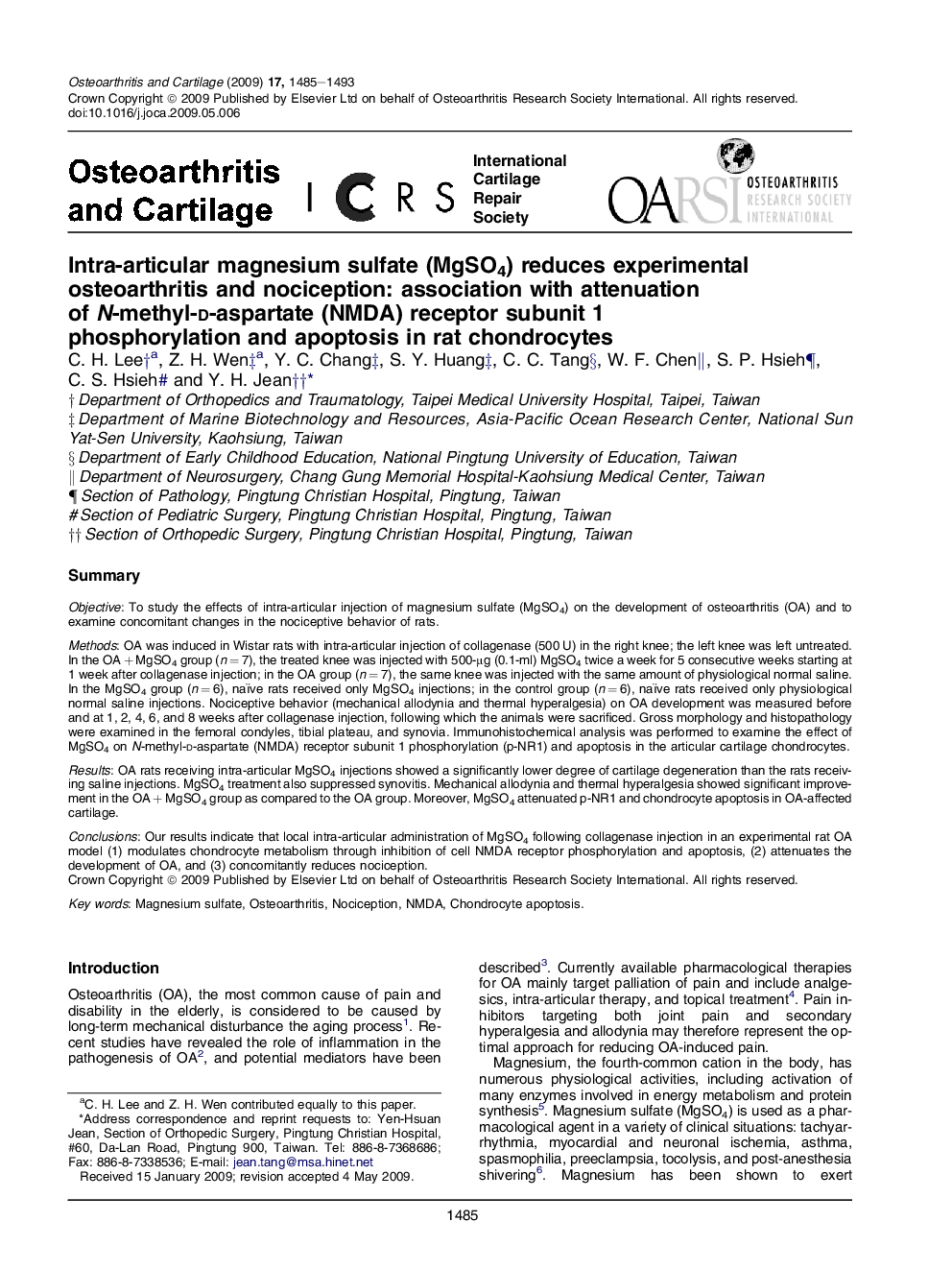| Article ID | Journal | Published Year | Pages | File Type |
|---|---|---|---|---|
| 3380691 | Osteoarthritis and Cartilage | 2009 | 9 Pages |
SummaryObjectiveTo study the effects of intra-articular injection of magnesium sulfate (MgSO4) on the development of osteoarthritis (OA) and to examine concomitant changes in the nociceptive behavior of rats.MethodsOA was induced in Wistar rats with intra-articular injection of collagenase (500 U) in the right knee; the left knee was left untreated. In the OA + MgSO4 group (n = 7), the treated knee was injected with 500-μg (0.1-ml) MgSO4 twice a week for 5 consecutive weeks starting at 1 week after collagenase injection; in the OA group (n = 7), the same knee was injected with the same amount of physiological normal saline. In the MgSO4 group (n = 6), naïve rats received only MgSO4 injections; in the control group (n = 6), naïve rats received only physiological normal saline injections. Nociceptive behavior (mechanical allodynia and thermal hyperalgesia) on OA development was measured before and at 1, 2, 4, 6, and 8 weeks after collagenase injection, following which the animals were sacrificed. Gross morphology and histopathology were examined in the femoral condyles, tibial plateau, and synovia. Immunohistochemical analysis was performed to examine the effect of MgSO4 on N-methyl-d-aspartate (NMDA) receptor subunit 1 phosphorylation (p-NR1) and apoptosis in the articular cartilage chondrocytes.ResultsOA rats receiving intra-articular MgSO4 injections showed a significantly lower degree of cartilage degeneration than the rats receiving saline injections. MgSO4 treatment also suppressed synovitis. Mechanical allodynia and thermal hyperalgesia showed significant improvement in the OA + MgSO4 group as compared to the OA group. Moreover, MgSO4 attenuated p-NR1 and chondrocyte apoptosis in OA-affected cartilage.ConclusionsOur results indicate that local intra-articular administration of MgSO4 following collagenase injection in an experimental rat OA model (1) modulates chondrocyte metabolism through inhibition of cell NMDA receptor phosphorylation and apoptosis, (2) attenuates the development of OA, and (3) concomitantly reduces nociception.
